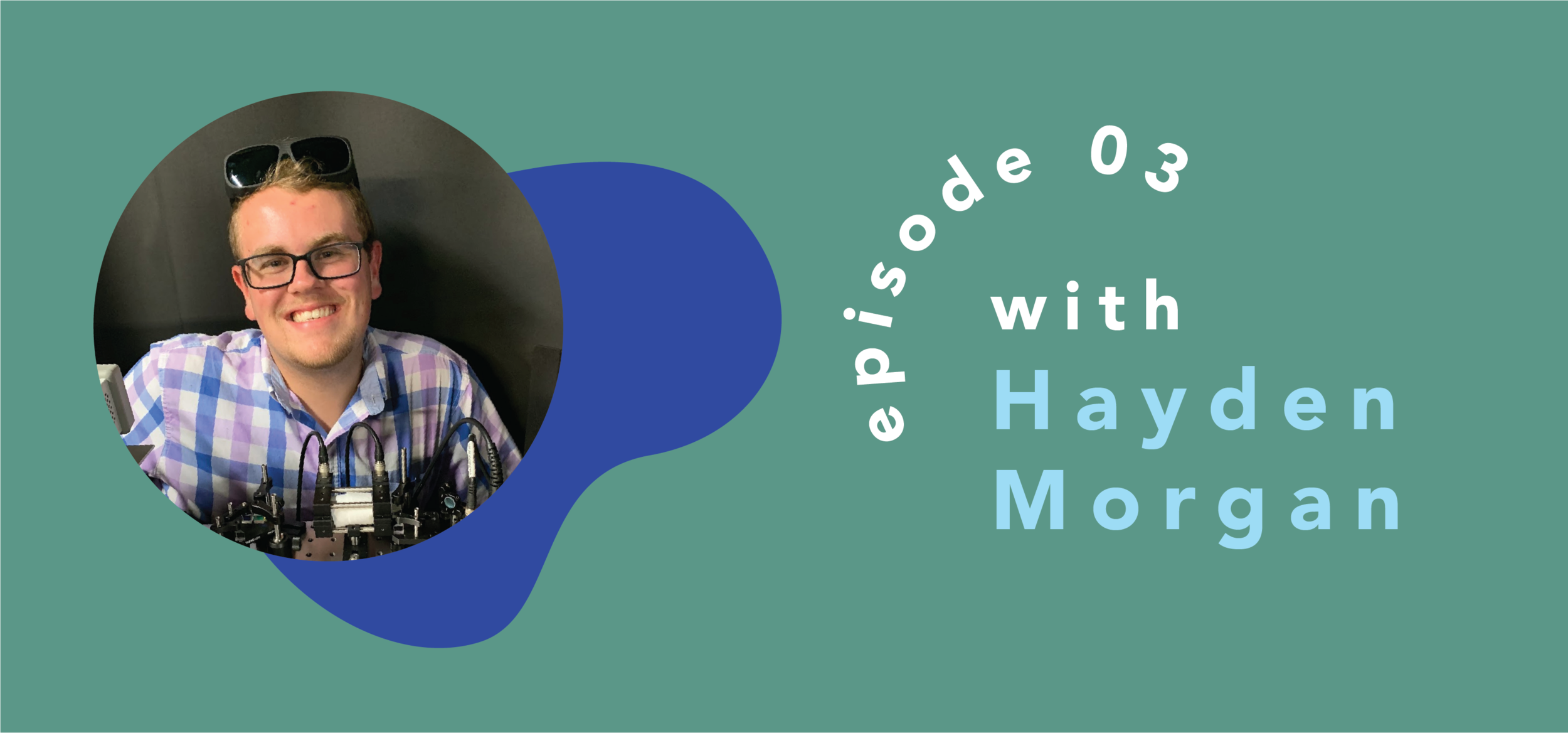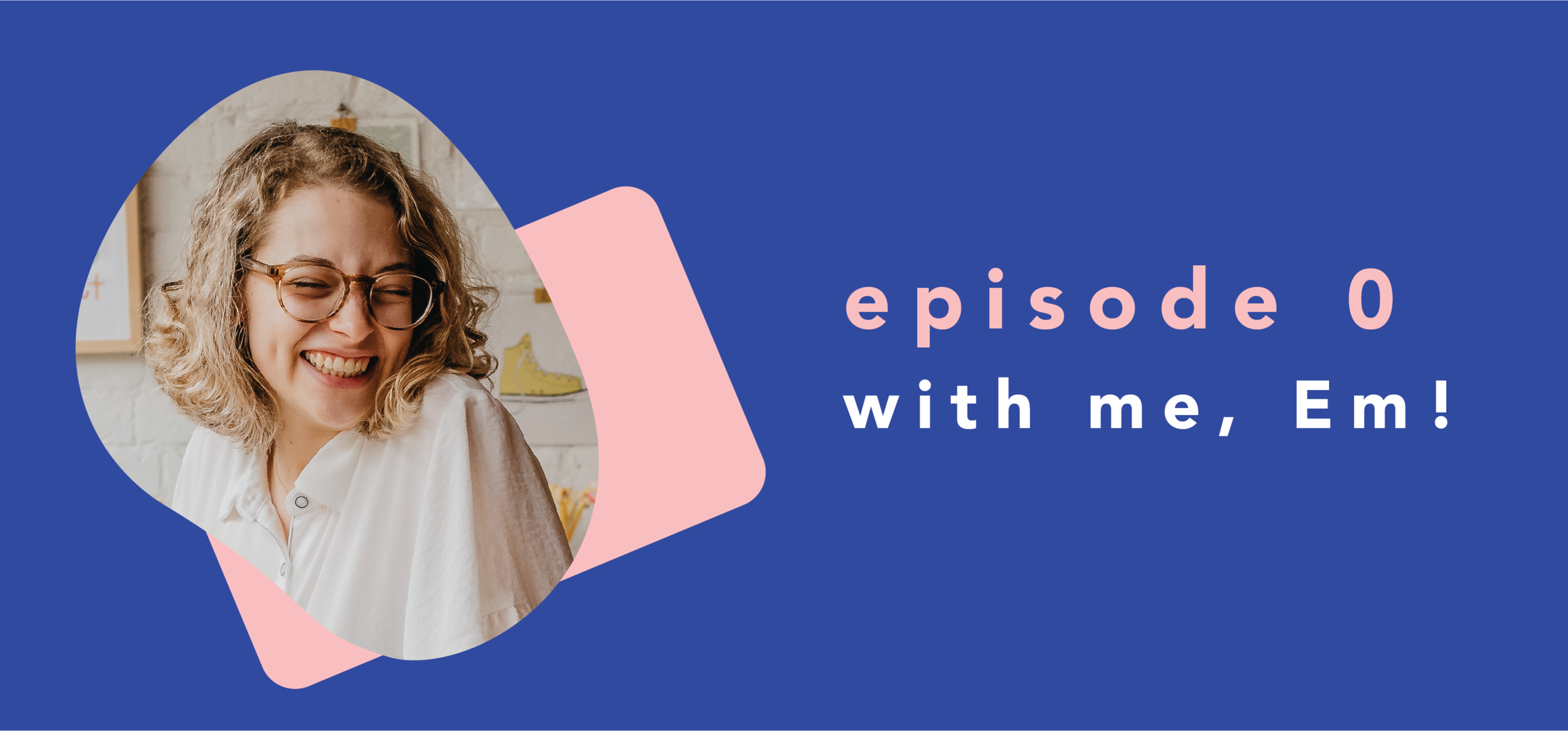Super cool lasers!! It’s both a statement, and the subject of this episode of Wesearch! I got a nice message from Hayden on Instagram, and after a few months of planning, we were finally able to sit down for a phone call to talk about his research. Why did it take us so long? Oh, just because he was at a Hyperloop competition. You know, the super cool future transportation method that being sponsored by Elon Musk? So I was already kind of blown away with how cool and smart his research must be, but then we actually talked about it for over 2 hours, and folks, it’s even cooler than that.
Hayden Morgan is a grad student at Texas A&M, where he’s studying new propulsion methods for deep space travel. We both recently graduated from the University of Cincinnati, where Hayden received his bachelor’s degree in mechanical engineering. So in this episode, I learned about physics and chemistry, how cool rockets are, and all of the ways that we’re shooting ourselves through space. We also talked lasers, vacuums, what Bill Nye is up to, figuring out the best ways to work, how to make group projects suck less, being excited about what you do even when you don’t think you’re good at it, and so much more!!
Also!! This episode is bonkers long, and it was even longer before I edited it! If you want even more of this chat, I’m uploading the full primo-extremo long episode on Patreon! Listen to me freak out because I remembered minor chemistry facts! Okay enjoy!!
This episode of Wesearch was sponsored by Audible!
You can support this show and get a free audiobook by going to audibletrial.com/wesearch!!
Why Audible? Audible content includes an unmatched selection of audiobooks, original audio shows, news, comedy, and more from the leading audiobook publishers, broadcasters, and entertainers. And I’m not just saying this because they’re sponsoring this episode of Wesearch, but I really genuinely love Audible. I interned there for a semester, and it’s a company I genuinely loved working for, and I’ve recommended them to so many people because I love audiobooks so much. As I talked about with Hayden in this interview, finding a learning style that works best for you is a game-changer when it comes to having fun while learning, and Audible has really changed my life by allowing me, an auditory learner, to listen to all of the books that I’d been wanting to read and get more out of them!
I want to recommend Packing for Mars by Mary Roach because 1) it’s one of my all time favorite books, and 2), it’ll teach you all about all of the weird and wild things that have gone into making space travel possible. Or if you’re more of a science fiction person and want to keep the dream of long-distance space flight alive, The Long Way To A Small, Angry Planet by Becky Chambers is a really great listen. But you don’t have to stop there, Audible has so many amazing audiobooks so you can fill your brain with whatever you want! I even have an entire Goodreads shelf of all of the books that I’ve listened to on Audible, and so so many to recommend if you need suggestions.
Want to learn more? Here’s what Hayden recommends:
Learning via Youtube!
Video: How a laser works!
Video: How does laser cooling work?
Sources! Everyone’s Favorite Part!
What is a laser? Totally didn’t know this, but laser is an acronym for Light Amplification by Stimulated Emission of Radiation. Let’s break that down a little.
Light travels in waves and every color of light that you can see corresponds to a different wavelength, or the distance between the peaks in the wave. Lasers are a type of artificial light where all of the wavelengths line up and travel together to form a very bright, very focussed beam of light. Lasers have a ton of uses, but most of them involve the fact that the beams can travel a lot of distance and concentrate energy into one point.
Why do cats love lasers!? The answer doesn’t have much to do with the physics of the lasers or the way that the light looks, but it has to do more with what the lasers make cats (and us!) think. A series of experiments done by Pratt et al, showed that people, and by extension, a lot of animals, noticed and paid more attention to animated imagery and changes in motion than static images or predictable motion. By why?? We can guess that it has to do with the way that our animal brains and diets evolved: food that moves, prey, tends to be a better source of protein, that we need to survive. We notice movement so we, and cats, can hunt it.
Planck’s constant allows you to relate the amount of energy to the frequency of the light. By the discovery of Planck’s constant, we learned that energy can only come out in specific chunks, called “quanta,” so all of the energy released is basically 1 or 2 or 3 times Planck’s constant.
What is solar sailing and how does it work?
Doctors Steven Chu, Claude Cohen-Tannoudji, and William D. Phillips were awarded the Nobel Prize in 1997 for their work on super cool lasers. Very basically, we tend think of lasers as things that are hot and burn or blast other things away, and that’s true in a sense! In laser cooling, lasers are being blasted at something, molecules, which are always in motion. The hotter the molecules are, the faster they’ll move and bounce around the space that they’re in. So how do you stop something that’s in constant motion? Shoot a laser at it, obviously. The force of the light wavelengths coming from the laser are just enough that it slows down or even halts the force of the molecules moving in the direction that the laser is opposing. To get them to slow their roll in most directions, the solution is to fire lasers from all of those directions. The Nobel Prize described this innovation in physics as “Atoms floating in optical molasses,” which is 1) hilarious and 2) makes sense. Laser cooling doesn’t work like putting something warm in the fridge to cool it down, it works by essentially trapping molecules where they are and forcing them to move more slowly, which makes them cool down.
Hydropower is the conversion of energy from moving water into electromagnetic energy that we can use to power things. Let’s think of it this way: we’ve probably all seen a big water mill on tv. That big wheel gets turned by the energy of the rushing river water, which converts the kinetic energy of the moving water, into mechanical energy, the wheel turns. In the old fashioned style mill, the mechanical energy that the wheel creates allows the mill workers to do things like grinding grain. We use a very similar process in hydro plants today: the water causes turbines to spin. The turbines are connected to generator systems that are able to convert the mechanical energy into electricity that can be used to power the community. So they’re great as a source of renewable energy for communities that live near running water, but not so great when it comes to generating enough energy to blast off.
NASA’s Technology Transfer Program, or T2, works under the mission statement of “Bringing NASA Technology Down to Earth.” Through their program and their publication, Spinoff, T2 brings technology that was developed by NASA researchers into the private sector, funds new research, and provides patents that they’ve developed through the public domain to help fuel new inventions. Some of these technologies that they’ve developed? Memory foam mattresses, LED lights, cordless vacuum cleaners, and water purifiers. Also I just wanted an excuse to put in a reference to this excellent tweet, I think about it all the time.
NEW RULE: if you’re wearing a NASA shirt and you walk past someone else wearing a NASA shirt you have to nod and say “see ya at the office”
— Dustin Growick (@DustinGrowick) September 12, 2019
This is Hayden’s Instagram, where he posts excellent pics of his puppy and woodwork!
Or follow Hayden’s lab’s Instagram! It’s got some very, very cool science stuff (but less puppies). You can learn more about the research that the Laser Diagnostics and Plasma Devices Lab at Texas A&M is doing on their website!
Some of Hayden’s undergraduate research can be found here: Parameters Influencing Regression Rate of Solid Rocket Fuels
Let’s Apply This Stuff!
Okay, I get it, doing hands-on physics and cool laser science isn’t everyone’s thing. I personally, don’t have a super easy time doing math, so understanding the science behind a lot of these concepts was actually pretty tough for me! But as we talked about, don’t let what you struggle with learning about in a classroom setting make you give up on things that you’re passionate about. You’re allowed to be someone who really dislikes school but loves learning. Knowing more about subjects that interest you is exciting, and if there’s one thing I’ve learned already from talking to all of the researchers that I meet, it’s that they keep learning and working because they want to.
So what helped me (and probably a lot of other people) like learning more? I had to take this quiz at the beginning of high school, and it helps you determine which ways you learn best. It took me a super long time to figure out strategies that worked for me, but knowing that I learn best through listening and seeing diagrams really helped me to figure out new ways to wrap my brain around things.
Figure out what you like and what makes you weirdly happy to learn about! I loved learning about mummies when I was a kid, and I realized that I still really loved learning about death rituals as an adult, to the point where I wrote my senior thesis about it! Learning about and doing things that you love can help make it less work in the long run.
I really wanted to talk about something I love about research: it takes so many forms. From reading, or analyzing statistics, to performing experiments, or observing animals, the ways that you can learn something new are really limitless. In episode one, Erin talked about how a lot of what she does deals with data, but her field is beginning to work more regularly with mixed methods to get first-hand accounts of the impact of their research. With this show, I’m really excited to see the full breadth of research methods because there isn’t one single way to learn something. Everyone has a way of working that’s best for them, and different subjects require different ways to explore them too. While my favorite way of learning something, by taking notes, works best for me, it might not work as well for my best friend who needs to read aloud in order to understand something. And that’s okay! There’s no wrong way to learn.
Also! Point a laser pointer at your cat, if you have one, and appreciate the science that went into that entertainment. You’re welcome.



